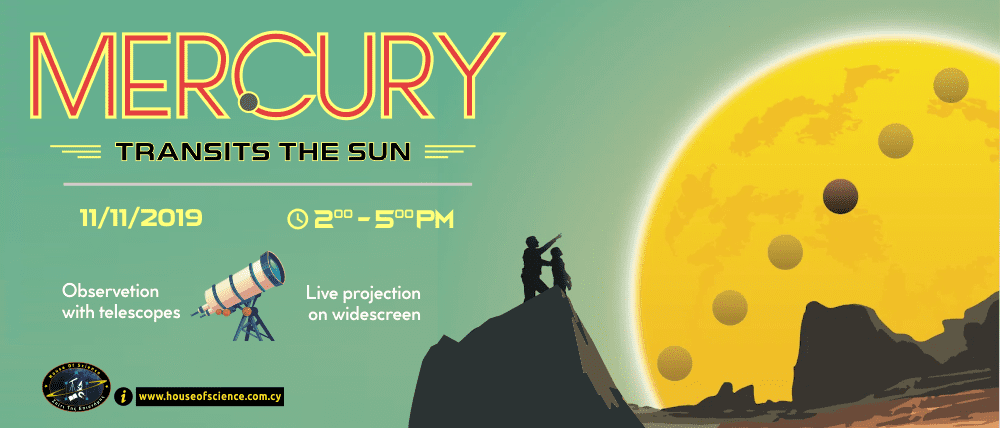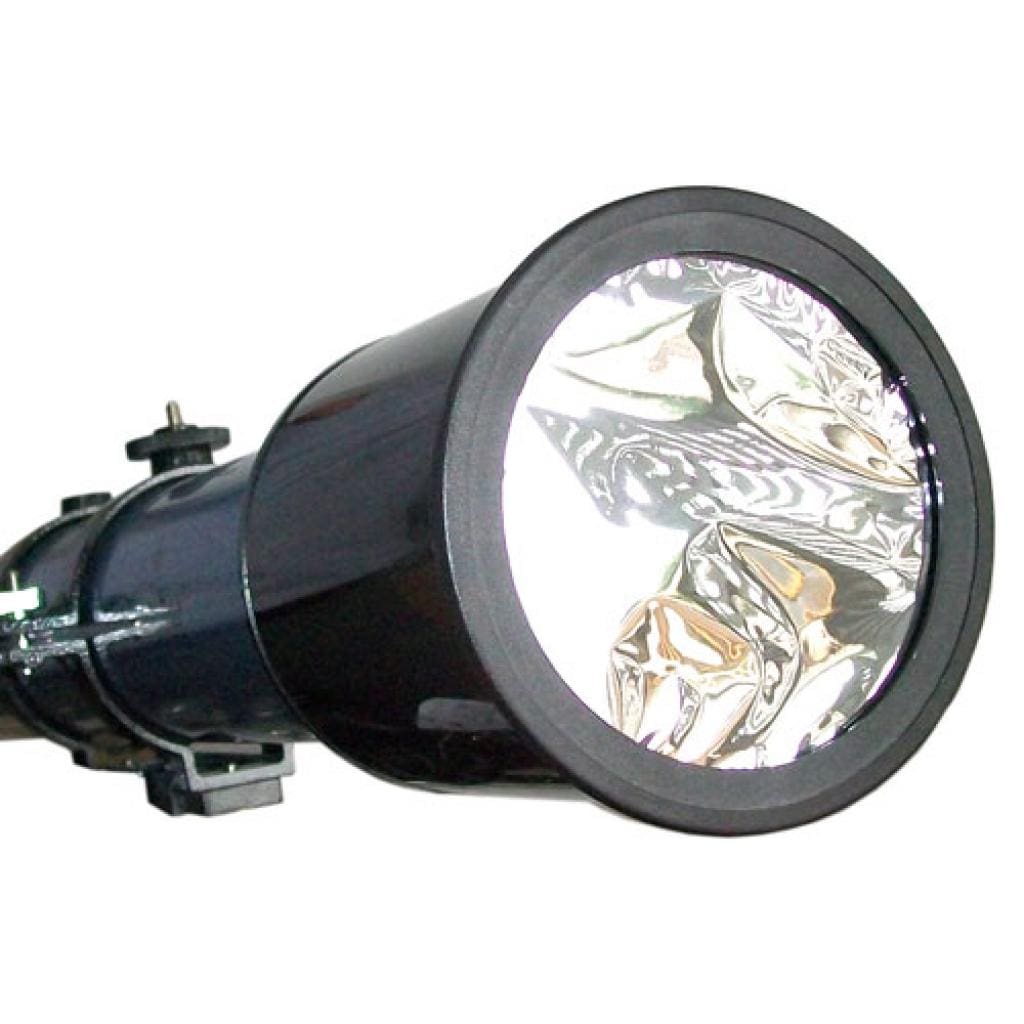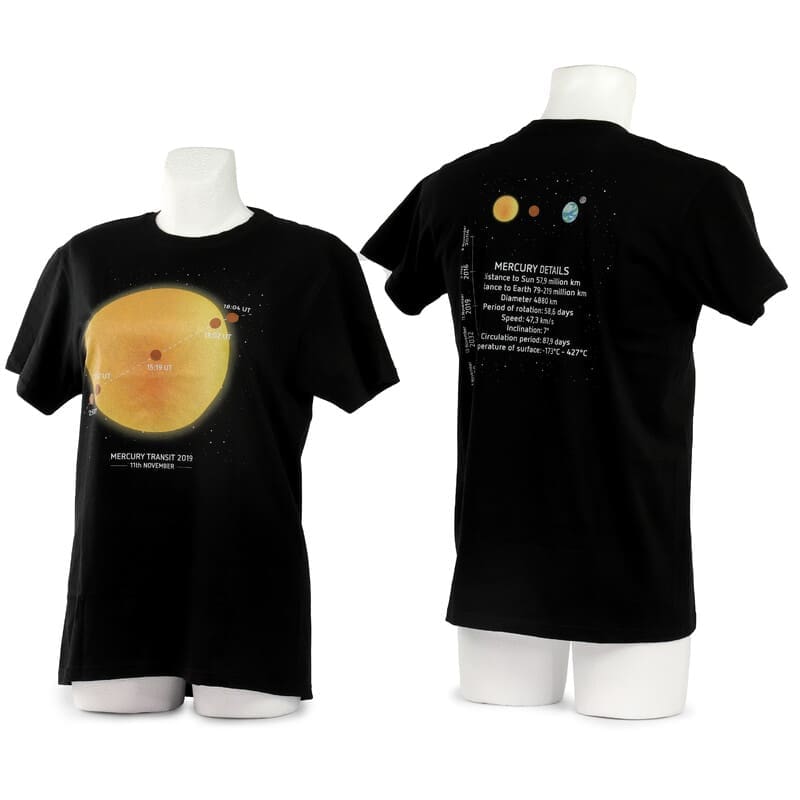
Get ready for the upcoming Mercury Transit, a rare astronomical phenomenon. It will take place on the 11th of November and will be visible from Cyprus. Mercury will pass in front of the solar disk, as it will positioned between our planet and the Sun.
In the course of a century, a transits of planet Mercury occurs roughly 13 times, a fact that demonstrates the rarity of the phenomenon. The same phenomenon occurred in 2016 while Mercury’s next transit will happen in 2032!
At House of Science We will have suitably equipped telescopes set up, that will allow everybody to safely observe the phenomenon. Finally, the live image of the solar disk will be projected on a big screen, as that will be captured through one of our telescopes. At 3pm there will be a short speech explaining the phenomenon to those present.
What will we actually see?
We will see the planet Mercury passing in front of the Sun covering a small portion of the solar disk. The onset of the phenomenon is marked by the planet’s contact to the solar disk, which will take place at 14:34. The phenomenon will last approximately 5 hours and 30 minutes, however it will only be visible in Cyprus until 16:46 due to the setting sun.
But be careful as the observation of Mercury’s transit can only be done through a telescope and requires the use of a special protective filter. So, if you have a telescope you need to get equipped with a solar filter so you can safely observe the phenomenon.
What should we know about the planet Mercury?
Mercury is the smallest and nearest to the sun planet. Its surface is full of craters due to the enormous gravity of the Sun, which attracts wandering rocks towards it. Due to its very slow rotation around its axis (58.5 days) the surface temperature under sunlight can reach up to 430 C, while at night it drops to -180 C!
Can we observe transits from other planets?
In order to observe a transit, the planet must lie exactly between the Sun and the Earth. Therefore, only the inner planets of our Solar System (Mercury and Venus) can create this phenomenon. Indeed, the transit of Venus is even more rare, as the frequency of this phenomenon is about twice per century. But we can observe transit phenomena from other stars. The phenomenon of planetary transit is the main tool for the detection and discovery of exoplanets in our Milky Way galaxy. Up to now, more than 3,000 planets orbiting other stars have been discovered by observing this phenomenon!
Event start: 14.00
End of event: 16.45
Location: House of Science, Limassol
Info: 25253580
Free entrance!


